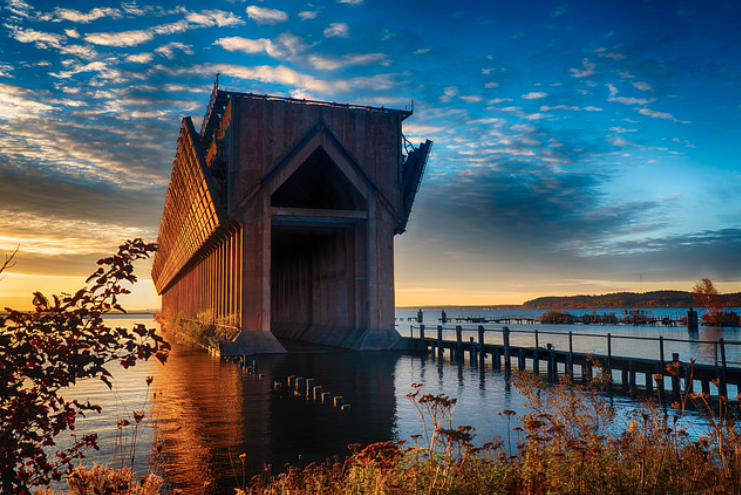Photo Exhibits |
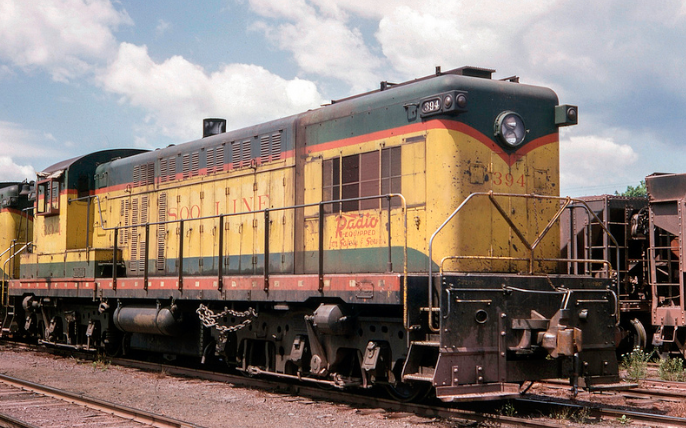
SOO Line Baldwin #394 still wears the colors of 1961-merger partner Duluth South Shore &
Atlantic. The six-axle AS-616 was typically assigned to shove loaded jennies up the 1.22
percent incline of the railroad's 3,500-foot-long ore dock at the Marquette Lower Harbor.
(Karl Henkels photo 10 July 1966; Chuck Schwesinger collection)
| 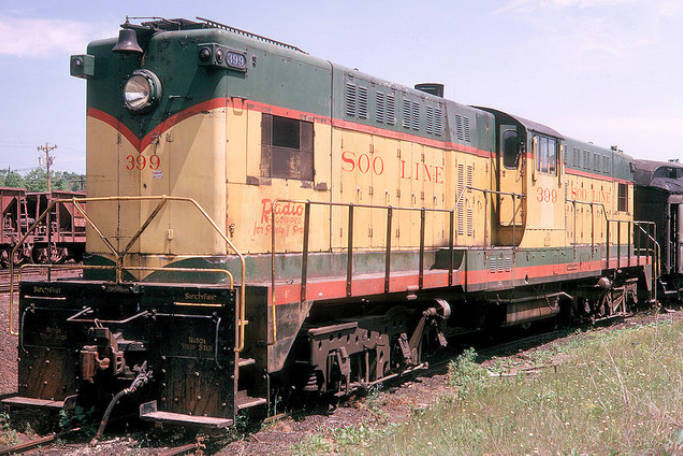
DSSA's four (#300-303) could be best described in a single word - "Brutes." They were 74
feet in length and tipped the scales 360,000 pounds. At merger time in 1961, the quartet
were coneyed to the SOO line as #396-399, but only the #397 received the red and white
livery. (Karl Henkel photo; Chuck Schwesinger
collection)
|
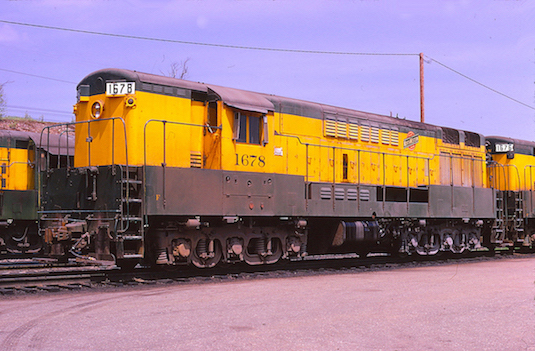
Chicago & North Western tied up nearly all their ore moves from Escanaba at Euclid Yard in
Ishpeming until summer of 1986, when the interchange was moved to Eagle Mills, Queens and
Partridge. C&NW H16-66 #1678 at Euclid Yard on Date xxxxx wears an economy paint scheme.
(Robert C. Anderson photo; R.Craig collection)
| 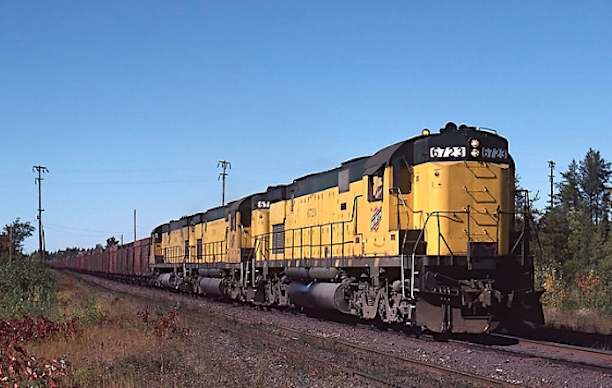
The closure of Republic and Humboldt processing plants resulted in hardly any ore being
interchanged at Euclid, and all that remained was the general freight. Thus, C&NW often
made turns from Escanaba to Empire. C&NW C628 #6723 rolls through Little Lake, Michigan
on 30 September 1979. (Chuck Schwesinger photo)
|
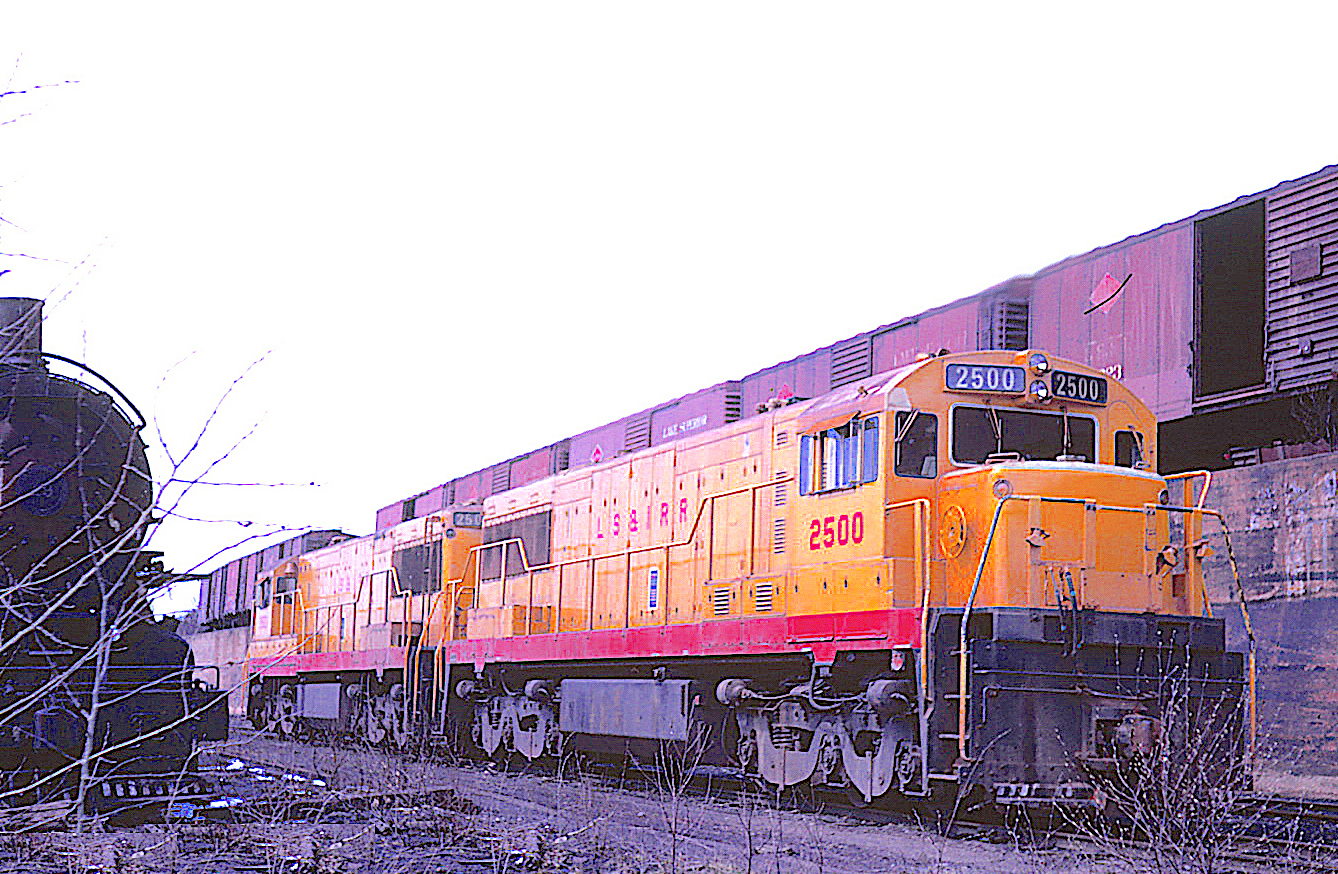
General Electric-built U25Cs #2500 & 2501 were the first non-Alco diesesls acquired by the
Lake Superior & Ishpeming railway; their yellow with red lettering garb was also non-standard.
The pair were parked next to the ore dock approach ramp at Presque Isle on 10 April 1977.
The 2-8-0 steamer #19 belonged to Marquette & Huron Mountain, a defunct tourist line.
(R. Craig photo)
| 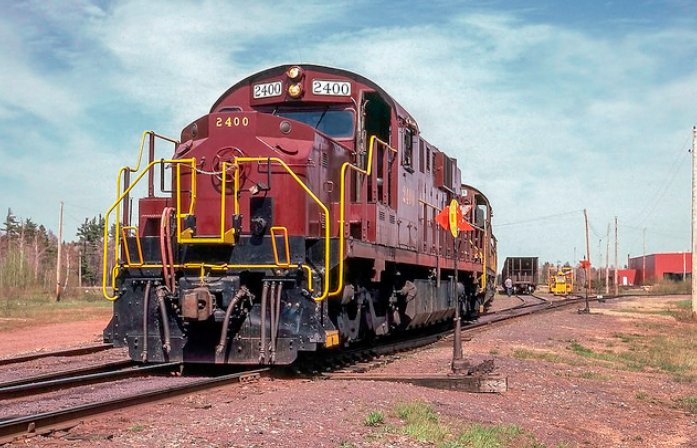
Railfan interest in the LS&I rose aubstantially with the arrival of the "2400" series RSD15s.
The long-nose "alligators," were right-at-home on the point of 120-car iron-ore trains. On
18 May 1984, the #2400, 2405 and 2401, work the "Yard Job" before grabbing a string of general
freight cars and heading for the C&NW / SOO at Ishpeming. (Chuck Schwesinger photo)
|
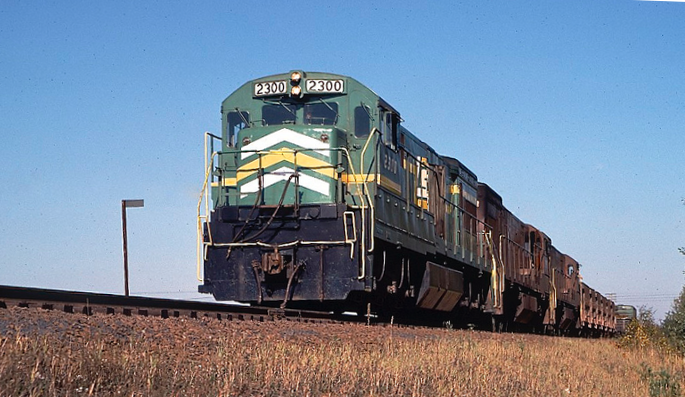
GE delivered two 2300-hp freight motors to the LS&I in 1968. The shift away from long-time
supplier Alco occurred when the NY-builder wanted only to sell a six-axle C628 rather than
custom build a C620 / C624; thus the railroad opted for U23Cs. The #2300 leads a freight west
of Negaunee on 18 May 1984. (Bill Johnson photo)
| 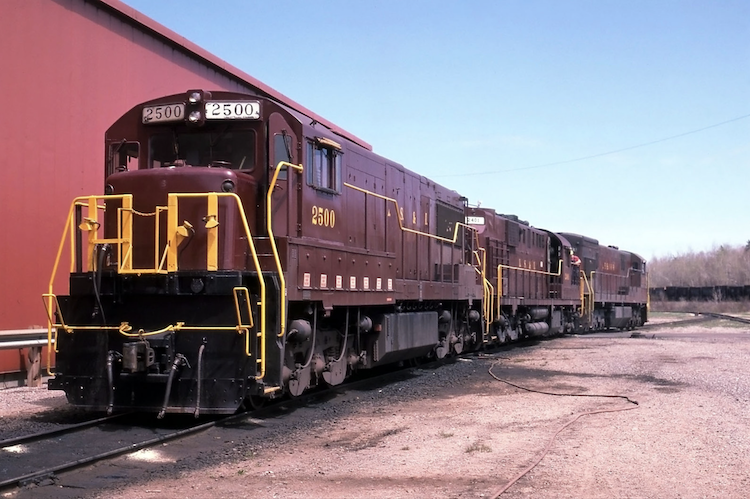
There was growing evidence by the summer of 1988 that the early GE's days on the LS&I were
numbered. Consequently photographer Chuck Schwesinger devoted extra effort to documenting
their remaining days in the U.P. On 18 May 1988, #2501 and two GE stable mates deliver
the "3PM Hill Job' to Eagle Mills. |
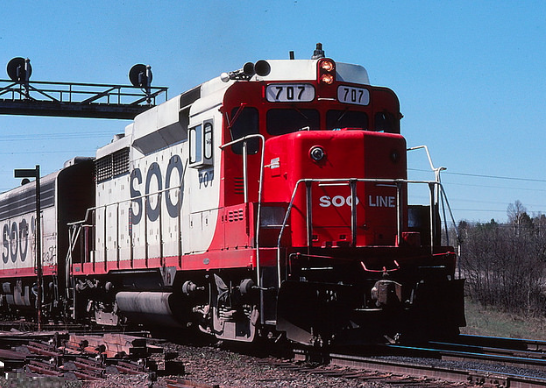
SOO Line GP30 #707 and F7A #213A duck beneath the signal bridge at the east end of Euclid
Yard in Ishpeming and head for Marquette, 15 miles in the distance. The EMD-built duo lead
an eastbound mixed manifest from L'Anse to Marquette. After making set-outs and pick-ups,
the daily (except Sunday) train continues its runs towards Gladstone. (R. Craig photo 4 May
1979.)
| 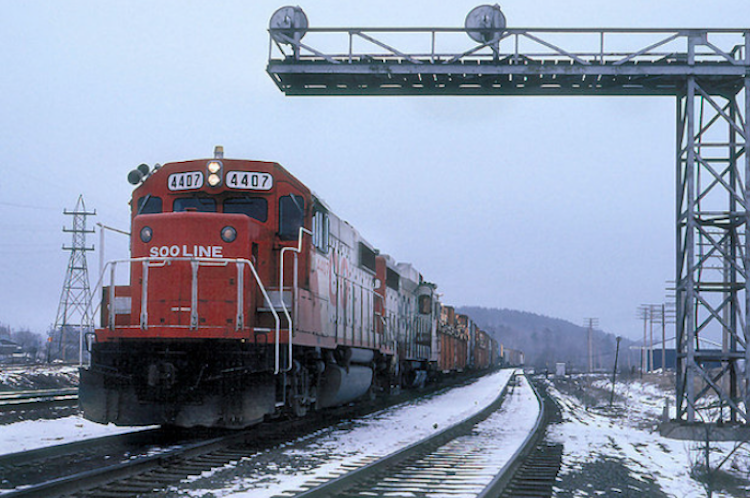
SOO 4407 and GP30 have struggled up the west grade from Marquette with 15 cars on wet rail;
it holds at Negaunee for an e/b C&NW ore load out of Euclid Yard. By October of 1987, a newly
formed Wisconsin Central Ltd. takes ownership of this segment of the SOO, along with its entire
Lake States Transportation subsidiary (Chuck Schwesinger photo, 14 April 1980)
|
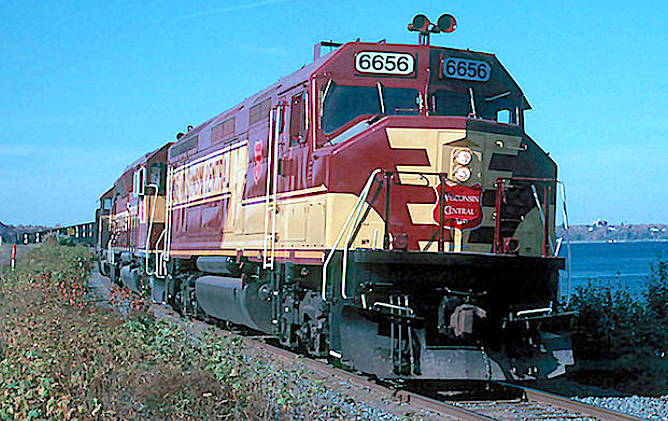
Upper Peninsula railfans finally had the opportunity to focus on the creations
that came from the EMD plants at LaGrange, Illinois and London, Ontario. It was all made possible
by Wisconsin Central's 1987 acquisition of the SOO Line. WC #6652 leads a Utah-bound taconite
train outside Marquette. (Chuck Schwesinger photo)
| 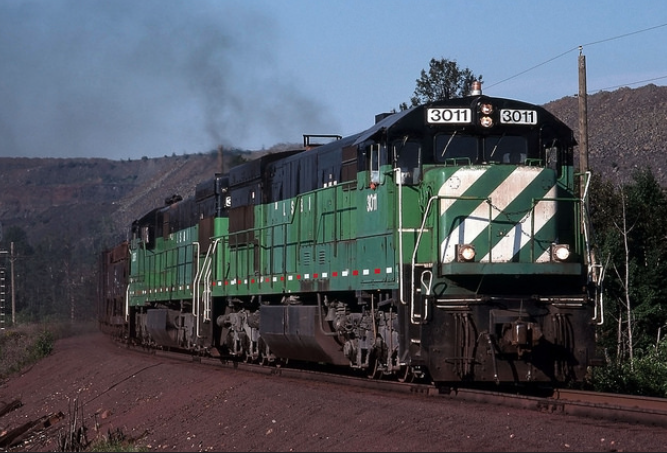
The frequent rumors of "new" LS&I power are real, and the time has come for the old guard
(Alcos and early GEs) to stand-down. The replacements arrive in late 1989, and they are
proven vetrans who have served proudly for years on Crawford Hill. They wear the cascade
green of Burlington Northern and badges that read "Built by General Electric." (Chuck
Schwesinger photo)
|
|
This photo essay would not have been possible without the assistance of
Chuck Schwesinger. Beyond providing many excellent photos, he wrote and provided info for
many of the photo captions.
|
